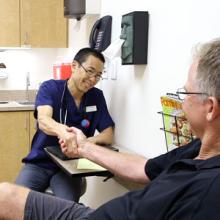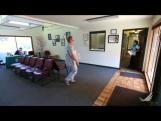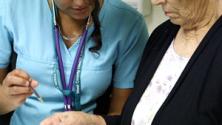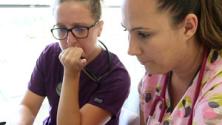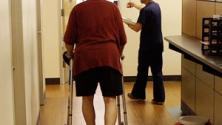What is the challenge?
The Affordable Care Act makes clear that robust primary care is the foundation of a more accessible, higher quality, and more affordable health system. To meet this expectation, American primary care must make the comprehensive, inter-related set of changes associated with a more patient-centered, high-value model of care, such as the Patient-Centered Medical Home (PCMH) Model. The various versions of the PCMH generally agree that medical homes provide higher quality, more patient-centered, and efficient care by the excellent and systematic performance of several key functions, such as medication management, self-management support, care coordination, and care management. To be done well, each of the key functions involves the coordinated involvement of multiple members of the practice team. Many American primary care practices haven’t yet had the resources, training, or opportunity to put together the requisite staff and teamwork, infrastructure, or work flows that collectively lead to improved performance.
What needs to change?
Changing staff roles and work flows is hard, disruptive work. It doesn’t happen unless practice leadership is motivated to change, the practice has a proven change strategy, and staff are given the time and resources to design and test changes. To perform the key functions well and become true PCMHs, many practices will need to begin by putting together effective practice teams (see the Practice Team topic) that can efficiently and effectively meet the needs of patients seeking care by planning and organizing care to reduce the chaos of a busy practice, and free up the time of busy staff to perform the other key functions of primary care.
What do we gain by making these changes?
LEAP sites and other exemplary practices that execute the key functions well have seen improvements in the four key primary care outcomes: clinical quality/patient health, patient experience, reduced costly utilization such as hospitalizations and ED visits, and less staff burnout and greater career satisfaction.
- Assess performance.
Performance measurement is an essential first step toward becoming a better practice, and a practice that will be attractive to payers. There is now abundant evidence that outcomes such as Emergency Department (ED) visits, hypertension control, patient experience, or staff burn-out can be substantially improved by changing practice systems. It is only through the measurement of outcomes that a practice really knows how well it is caring for its patients. But outcome measurement reveals what needs improvement, not how to make improvements. Instruments such as the Patient Centered Medical Home Assessment (PCMH-A) — the major source of assessment items in this Guide — can help practices evaluate their practice systems and their ability to execute the key functions. It also provides useful information about where to start and focus.
- Build effective core teams.
All of the functions discussed in the modules that follow involve the core practice team, and many are primarily the work of the core team. The advantage of having the core team take primary responsibility for most care delivery functions is their knowledge of and ongoing relationships with patients. But if core teams are going to be responsible for functions such as self-management support, population management, or medication management AND manage patient and information flow, they must have the resources and time to do it all well.
- Use rapid cycle tests of change to evaluate process changes.
Implementing the functions described in this section of the Team Guide is a complex undertaking, involving multiple people, IT and other systems. Improving the key functions of primary care generally requires disruptive changes to people’s jobs, practice infrastructure, the practice’s budget, and sometimes even the practice’s culture. To avoid potentially costly failures, it is best to first try out new staff roles or processes with one or two willing practice teams with a few patients or for a few clinic sessions to address specific questions or concerns. Keeping the tests small in scope and short in duration allows many different questions/concerns to be addressed in a short period of time.
- Make new or improved functions standard work and sustainable.
Once you are convinced that the pilot team(s) has demonstrated that they have a real improvement, carefully document the changes (work or process flow diagrams help) and build them into practice systems—e.g., EHR alterations, changes to job descriptions and training requirements—to prevent reversion to the old ways of doing things and to support spread to other practice teams. LEAP site leaders often stressed that they made changes because they were “the right thing to do” even if they increased costs. But these same leaders were generally aggressive and creative in their efforts to find new reimbursement strategies or revenues to cover the added costs.
Video
If you have a question about the improvements, action steps, or tools & resources in this module please let us know. We're here to help. And if we can't answer your question, we can probably connect you with someone who can.
